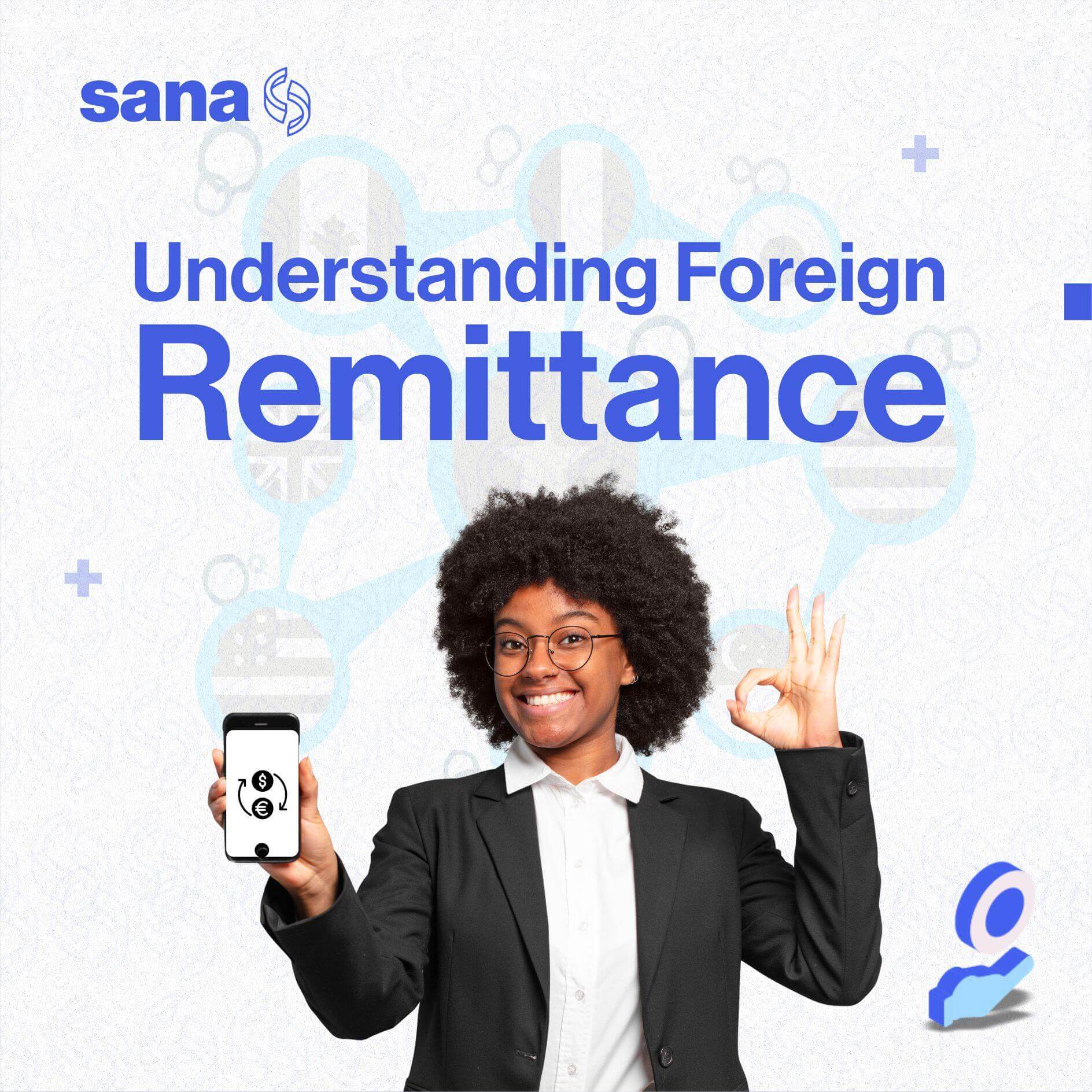Understanding Foreign Remittance
Foreign remittance is the process of transferring funds from a foreign employee/worker to their home country. These apps simplify the process.

Canada is easily one of the major contributors to global remittance. In 2021, Canadian residents sent millions of remittances to other countries, which helped to boost their GDP. Essentially, this happens because the country is home to thousands of foreign workers who regularly send money back to their home countries. If you are a new foreign worker in Canada who is planning to send money back to your home country, you need to learn the basics of foreign remittance. In the subsequent paragraphs, we’ll be taking a look at the meaning of foreign remittance, its benefits, cost, and other details about it.
What Is a Foreign Remittance?
Foreign remittance is the process of transferring funds from a foreign employee/worker to their family or any other person in their home country. Remittance makes up a major part of a country’s economic growth as estimated by the gross domestic product (GDP). Hence, foreign remittances are very important for most countries, especially developing ones.
Usually, you can execute a foreign remittance via any electronic payment system. These digital remittance or electronic payment system services are provided by different channels, such as a traditional bank or any money transfer service provider. Typically, they charge you a specific fee for any traditional or bank remittance service they render to you.
Understanding Foreign Remittances
Generally, foreign remittances consist of the personal savings of migrant employees. These employees leave their countries of origin to seek greener pastures in developed countries, such as Canada. Most funds transferred back to a migrant's country of origin are usually used to cover basic needs, such as food, clothing, and medical expenses. In fact, developing nations or emerging economies depend heavily on foreign remittances from their citizens working in developed countries.
What is the charge on foreign remittance?
You must pay a specific fee whenever you execute any foreign money transfer transaction. The exact fee you have to pay largely depends on the kind of bank account both you and your recipient have as well as the details of the transaction. Also, it depends on the type of money transfer service you use and the type of transfer channels your service provider uses.
According to the World Bank, sending remittances costs about 6.3 percent of the total amount of money sent.
Collecting the remittance
When funds are sent abroad, your remittance channel will give you a unique reference code, which you have to forward to the recipient of the remittance. To receive the money you sent, the beneficiary must provide a proper means of identification, the same reference code you received, as well as other necessary documents. Without providing this reference code, the recipient cannot collect your remittance.
However, more digital processes of inward remittance and outward remittance only require that the individual receiving have a valid bank account that can receive foreign remittance. There are also other options like money agents, cash pickups and more depending on the channel the receiver has access to.
Benefits of Foreign Remittances
Many experts believe that since remittances are so broad, they have so many implications that extend far beyond a person’s finances. Since remitting generally involves banks and other financial institutions, individuals who send and accept remittances are very likely to have bank accounts. This promotes economic development.
Also, remittances can be very helpful in emergencies, such as war, pandemic, or natural disasters, when the sources of income of recipients disappear. Also, if a migrant’s home country suffers an economic downturn, remittances help to relieve the economic hardship.
Foreign Remittance Software Apps
Various tech companies have developed software applications to promote foreign remittances. Basically, these apps make the process easier, cheaper, more user-friendly, and more convenient. Remittance software apps remove the high fees associated with traditional remittance formats, like MoneyGram and Western Union. Three good examples of these apps are: SanaTransfer, Sendwave (formerly called Wave) and Wise (formerly called TransferWise). These platforms charge affordable fees and stand out from traditional banks. Also, the companies focus on encrypting all customer financial information. This ensures that their users' data is very safe and not exposed to hackers.
1. SanaTransfer
SanaTransfer offers easy, fast and secure payment services with better rates and faster payouts for international remittance. The app especially specialises in sending funds from Canada to countries around the world, making it a perfect choice for immigrants in the country looking to send money home. At the moment, it supports foreign remittance to 70+ countries globally, with more being added on a monthly basis.
2. Sendwave
Sendwave, formerly called Wave, specializes in dealing with funds transfers from Canada, the U.K., and the U.S., to East and West Africa, such as Kenya, Ghana, Nigeria, Senegal, Tanzania, and Uganda. Sendwave can facilitate international transfers in 30 seconds from your smartphone to the mobile wallet of your recipients. Currently, they boast thousands of customers on their website and charge a transfer fee of 1% of your total amount.
3. Wise
Wise, formerly called TransferWise, is another reliable International transfer app. They started their company with the assumption that transferring funds abroad is too deceptively expensive, given substantial hidden charges. To remove extra fees, this company makes use of real exchange rates (mid-market rates), which are specially designed to have far less of a markup made into the rates.
Wise sends at least $5 billion worth of transfers every month on behalf of millions of customers. Also, this company offers its users a multi-currency account that allows them to send and receive funds in foreign currency. Wise charges a fee for making use of its platform. This fee varies depending on the type of currency that is being transferred. The company was established by Kristo Kaarmann and Taavet Hinrikus in March 2010.
Factors To Consider Before Choosing A Money Transfer App In Canada
Before choosing any fund transfer app in Canada, you should consider these factors:
1. Fees
Some transfer apps bill their users for certain kinds of transactions, like international funds transfers or even using their credit cards to pay for something. While some foreign fund transfer services charge their users a flat fee, others just charge a specific percentage of the money. Usually, the fees differ depending on the amount, completion time, as well as location. The bottom line is that you need to check the transfer fees associated with any app before you register.
2. Transfer Speed
The time it would take for the money to get to the recipient is another critical factor you should consider before choosing any money transfer app. While some platforms only offer slow-clearing bank deposits, others can allow users access to fast money pickups at their agent location.
3. Exchange Rates
When transferring funds internationally, it is important to analyze the exchange rates proposed by each transfer app. Some International transfer apps offer their users far more satisfactory exchange rates than others and this influences the full amount of money the recipient gets. Generally, the interbank rate is the cheapest exchange rate any supplier can offer you. So if you find any transfer app that offers their users transfers at that rate, it is better to go for them. Note that even if the vendor announces that its service has “zero” fees, this cost still equates to a specific price you must pay.
4. Safety
It is very important to choose money transfer apps that have very strong security measures to help protect both your personal and financial data. Look for money transfer apps that give their users a secure login process and encryption of their financial data. Also, the app you choose should be registered and authorised by the appropriate authorities, such as AMF and the Financial Transactions and Reports Analysis Centre of Canada (FINTRAC).
5. Transfer Limits
The transfer limit determines how much money you can send for each transfer, every day, and monthly. For example, MoneyGram online offers their customers a transfer limit of CAD 990 every month. Make sure you check the transfer limit of any international transfer app before choosing it.
Bottom line
The importance of foreign remittance cannot be underestimated. Basically, it helps to grow the economy of developing countries and boost their gross domestic product (GDP). Also, it helps to safeguard your loved ones against economic hardships.
If you are a migrant in Canada who wants to remit money back to your home country, make use of any financial institution or money transfer app that is fast, secure and affordable.
SanaTransfer offers easy, fast and secure payment services with better rates and faster payouts for international remittance. Sign up now to get started.
